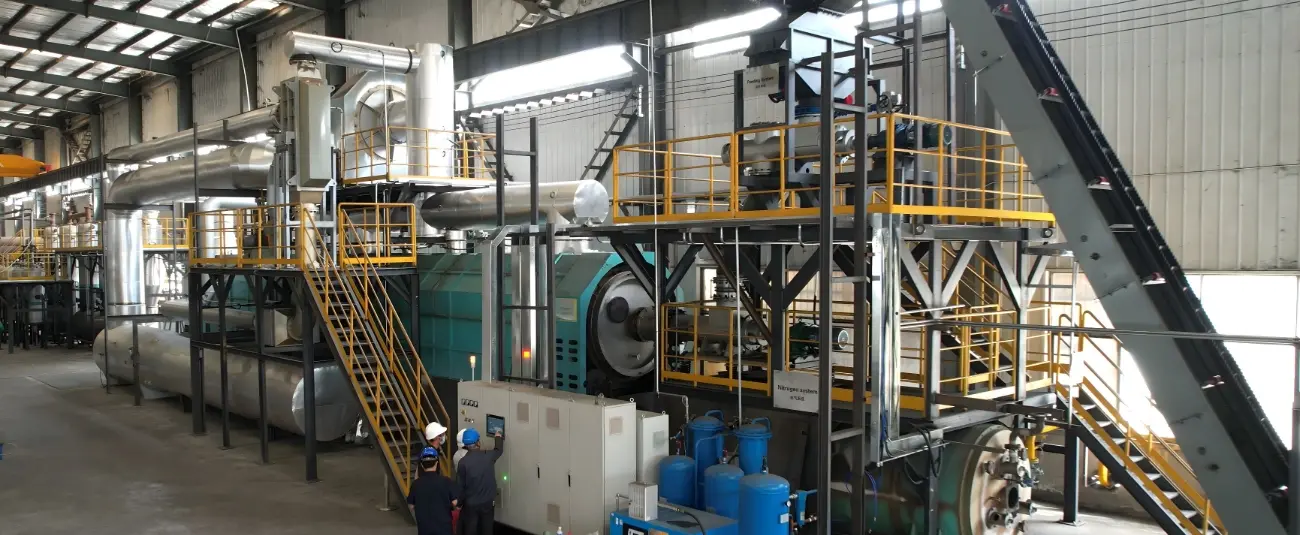Pyrolysis oil, also known as bio-oil or liquid fuel from thermal decomposition, is emerging as a promising substitute for conventional fossil-derived fuels. Produced through the thermochemical conversion of organic waste, it holds economic and strategic importance in the transition toward cleaner, more decentralized energy systems. As global markets seek alternatives that align with carbon reduction goals, pyrolysis oil offers a renewable, locally sourced energy vector capable of integrating into existing industrial infrastructure.
Value Creation through Decentralized Production
The economic appeal of pyrolysis oil lies in its capacity to convert low-value waste materials—such as plastics, rubber, and biomass—into usable energy carriers. A small pyrolysis plant can process these discarded feedstocks into oil, syngas, and char, creating a diversified output portfolio. The oil serves as a combustible fuel or refinery feedstock, while syngas provides internal process heat, enabling energy self-sufficiency.
Decentralized production facilities, especially those based on compact and modular systems, have become commercially viable in regions with abundant waste generation but limited access to centralized refining infrastructure. By situating processing units close to waste sources, transportation costs are minimized, and the local economy benefits from new value-added activities. This distributed production model contributes to rural industrialization and supports circular economic frameworks.
Market Integration and Substitution Potential
Pyrolysis oil can substitute for various petroleum-based products depending on its upgrading level. When refined, it yields fractions comparable to diesel and heavy fuel oil, compatible with existing combustion engines and industrial burners. Its calorific value, typically ranging from 35 to 45 MJ/kg after refinement, positions it competitively against fossil alternatives.
In power generation, the oil can supplement or replace conventional fuels in boilers and turbines, particularly in decentralized grids or remote industrial zones. For refineries, it represents a feedstock option for co-processing with crude oil, thereby reducing the carbon intensity of downstream products. The scalability of production—from a small pyrolysis plant to large industrial complexes—allows flexible adaptation to regional market demands and policy incentives.
Economic Drivers and Competitive Advantages
The growing market for pyrolysis oil is underpinned by several economic drivers. Rising crude oil prices, carbon taxation, and sustainability mandates have intensified investment in renewable liquid fuels. Pyrolysis technology provides a lower capital barrier compared to traditional biorefineries, enabling faster project deployment and shorter return cycles.
Moreover, the feedstock cost advantage is significant. Many waste streams used in pyrolysis—such as agricultural residues or discarded plastics—bear negligible acquisition costs or even generate revenue through waste management contracts. When combined with by-product valorization, the overall profitability of small and medium-scale operations improves considerably.
In addition, pyrolysis oil production contributes to energy diversification and supply security, particularly for regions dependent on imported petroleum. The ability to produce renewable fuel locally strengthens economic resilience and aligns with national decarbonization strategies.
Outlook and Investment Landscape
Global energy markets are witnessing a gradual revaluation of pyrolysis-derived fuels. Technological advancements, improved upgrading techniques, and policy recognition are enhancing the commercial feasibility of pyrolysis oil. Financial institutions and climate funds are increasingly supporting small pyrolysis plant projects as part of sustainable waste-to-energy portfolios.
In the long term, integration with hydrogenation and catalytic reforming processes will further elevate product quality, opening avenues in aviation, shipping, and petrochemical sectors. As environmental regulations tighten and renewable fuel demand escalates, pyrolysis oil is poised to become a critical component of the diversified energy matrix—bridging the gap between waste reduction and economic growth.




